“I’m paying through the nose for my Google Ads campaigns.”
“We’ve run paid ads in the past, but stopped because we just didn’t see an ROI.”
“Our previous marketing agency ran our paid campaigns, but the results were pretty disappointing.”
Sound familiar?
Pay-per-click campaigns, also known as PPC campaigns, can provide a reliable flow of motivated traffic and revenue – if you’ve got the expertise and know-how to fine-tune them to deliver measurable results.
The Paid Advertising specialists on our CanIRank Full Service team have developed a unique approach to optimizing paid campaigns over 10+ years managing millions in ad spend for companies like Ford, Continental, Covered CA, New York Tourism Board, Valero, AdBlock, and dozens of startups and SMBs. Their process, which we’ll describe in this post, is designed to deliver qualified traffic on search and social platforms while also boosting your search engine optimization efforts.
Psst… if you’re worried that this won’t work for your business (too niche? too many competitors? ads too costly?) we’re sharing real-life results from CanIRank Full Service clients to prove that smart PPC delivers incredible value for a wide variety of businesses.
10 Keys to Incredibly Profitable Paid Ad Campaigns
Paid Campaigns Defined
Google Ads:
Formerly known as Google AdWords, the Google Ads platform allows advertisers to purchase ad space at the top or bottom of the search engine results pages (SERPs) for specific keywords.
Pay-Per-Click (PPC):
Ad campaigns in which you pay only when a user clicks through the ad to visit your website.
Search Engine Management (SEM):
Relates specifically to paid ads that appear on search engines, but does not include social or display ads.
Display Ads:
Also referred to as banner ads, display ads are similar to social ads in that they typically include images, brief copy or video. Ads are run on third-party websites within a publisher’s network. (Google offers the Google Display Network, and Facebook has a similar offering.) Ads can be placed on a specific website, or contextually depending on the content of your ad.
Social Ads:
Paid ads that appear on social platforms like Facebook, Twitter or LinkedIn. Unlike text-driven SEM ads, social ads offer photo or video formats.
Retargeting:
Ads that are shown to users who have already visited your website but have not yet converted.
Lookalike Audiences:
Also known as Matched Audiences or Similar Audiences. A method of targeting audiences using AI to more accurately predict which users are more likely to buy from you by comparing them with your existing customers.
Impressions:
The number of users – whether on a search engine or social platform – that have seen your ads.
Click-Through Rate (CTR):
The percentage of users who have clicked through an ad divided by the number of impressions. i.e. if your ad was viewed by 10 people, and 2 clicked through to your site, your CTR is 20%.
1. Comprehensive PPC Campaign Audit
Your Google Ads (formerly known as Google AdWords) account offers a treasure trove of valuable data, like target demographics, click through rates, conversion rates, impressions, etc. If you’re new to PPC, it’s almost impossible to know which data points can actually help you improve your campaign metrics.
Before kicking off any PPC campaign, our team takes a close look at what you’ve already done to understand what’s working well, what’s falling flat and to provide recommendations on the best path forward. If all you need is clarity and direction to share with your in-house team to execute, this is the smartest, most budget-friendly way to get started.
2. Identify Wasted Spend
If you’ve run your own Google Ads campaign in the past, you may be familiar with the Google Ads rep. They typically try to set up a call once a month to give suggestions on how to improve the performance of your campaigns. Which sounds great! Who doesn’t like free advice?
The catch is that they’re looking out for Google’s bottom line, not yours.
Recommendations like adding new keywords, increasing your daily budget, or targeting the Search Partners Network may increase the number of clicks and impressions that you get, but they usually result in you spending more money on Google.
The metrics that matter to your business – namely, conversion rates and costs per conversion – won’t necessarily improve if you’re just throwing more money at your campaigns. Understanding what’s really working and what’s not (and adjusting your campaigns accordingly) is critical.
Here are the specific metrics that identify where you may be wasting your ad spend – and what to do about it.
- Review keywords, ad groups, and ads with high numbers of clicks, but low conversion rates. This tells you that something in your paid campaign isn’t working.
- Low CTR likely indicates an ads problem. Time to refresh your ad copy, or revisit your keyword targeting to make sure it isn’t too broad. It’s also smart to think through the user intent of your target keywords – are these keywords that are likely to drive qualified traffic to your website?
- High CTR/low conversions usually indicate a website problem. Revisit conversion tracking to ensure it’s set up properly. What about the landing page? Is the CTA clear? Are you providing enough content/information to encourage visitors to engage – and ultimately, to buy?
- Quality Score. If your quality score is low, you’re spending more money on clicks than your competitors for the same keywords. Keep testing ad copy, CTAs and your landing page experience to reduce costs and ensure that you’re engaging with the people most likely to do business with you. To diagnose low quality scores for Google Search ads, make sure to toggle the Quality Score columns in your performance dashboard for Landing Page Experience, Ad Relevance and Expected CTR. Those three factors contribute to the quality score of your target keyword.
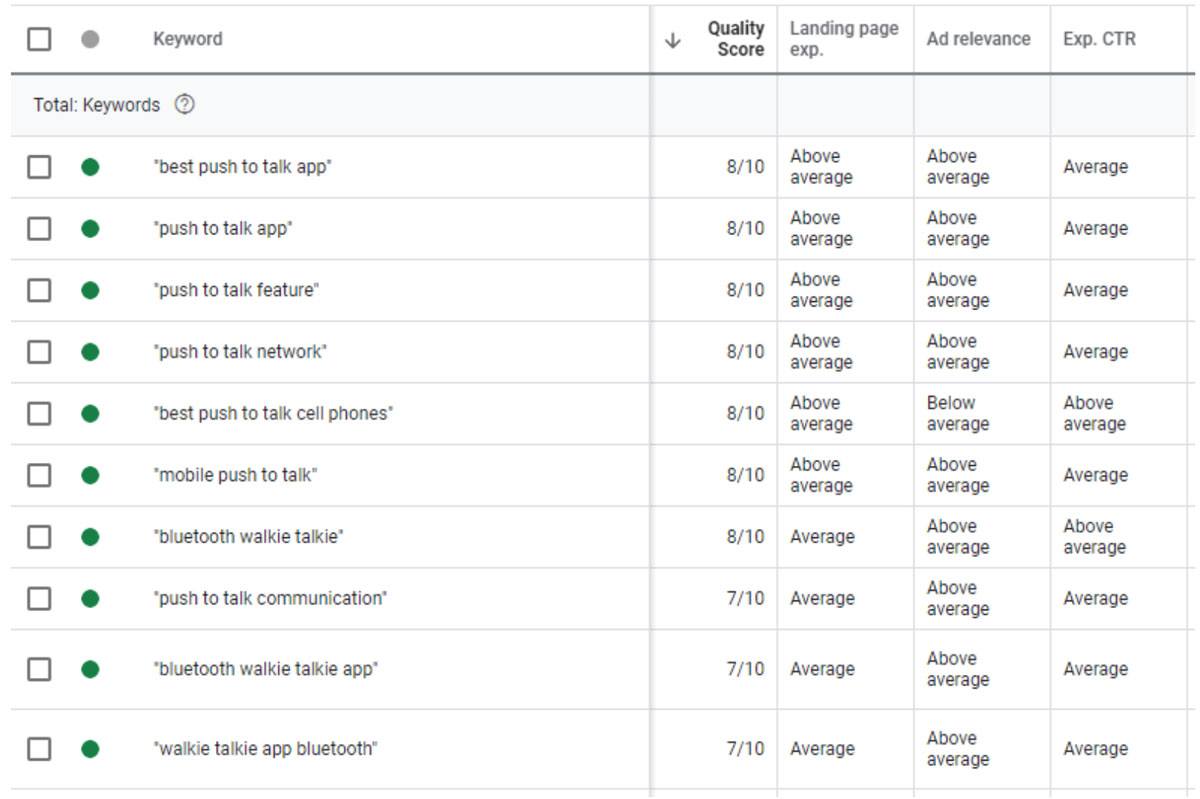
3. Learn from the Competition
If you’re in a competitive industry, it’s highly likely that your competitors have hired PPC specialists to manage their ad campaigns. Rather than be discouraged, use their investment wisely. View their advertisement examples with these two key questions: What keywords are they targeting? What types of offers or information are they sharing in their ads? You might find that they’re running price points in their headlines that undercut yours. Or they could be using a selling point that you haven’t considered, but also offer.
Are you more likely to click on the ad that promotes a $10/month plan, a $20/month plan, or $3-for-the-first-month plan?

Healthcare Company Mini Case-Study
The Challenge
Hit with the downturn caused by the COVID outbreak, this healthcare company turned to self-managing a new Google search ads campaign to generate paid leads, but saw little success. Also, because of the company’s relation to the healthcare industry, privacy concerns limited traditional demographic or retargeting strategies.
After conducting a PPC audit, the CanIRank team identified key opportunities for more advanced lead generation tracking, audience targeting, and campaign bidding structures.
The Results
CanIRank overhauled the search ads campaign with new keyword lists, ad copy, ad extensions, and implemented more accurate and more thorough conversion tracking on the client website. After two months of the new search ad campaign strategy, the client reported having maxed out available office hours for new clients.
- +350% increase in conversions
- -57% cost/conversion
- +134% conversion rate
4. Finding your Target Audience
Understanding the different ad platforms and ad styles will help you reach the right prospects. Here are two simple rules of thumb to consider:
- If you offer a service or product that people are already looking for, search ads are your best bet. This is especially true for local businesses.
- If you have a service or product that people would likely be interested in, but may not know about, social media and display ads are better suited. These ads allow you to target people by similar interests, contextual keywords, remarketing, similar or lookalike audiences and more.
5. Run Micro-campaigns
This is an excellent option for businesses who are looking to dip their toes into PPC, but aren’t ready to fully commit to a long-term paid campaign. Micro-campaigns are short, event or asset-driven campaigns. If you’d like to drive sign-ups for your next webinar or speaking event, a well-targeted campaign can deliver the right audience. Thought-leadership content, and other high-value/high-investment pieces like video, ebooks or whitepapers are also a good fit for these types of campaigns.
PPC campaigns using high-value assets improve your brand awareness while also introducing prospects to your USP.
The biggest challenge with micro-campaigns is timeliness. Unlike longer campaigns, you won’t have as much time to refine and iterate ad copy, so prepare beforehand by researching competitor ads and writing several variations on headlines and ad copy.
6. Test Different Ad Formats
To reach the largest possible audience of prospects, experiment with running ads in several different formats. Some of your prospects will engage with text-based ads, others prefer to watch video ads, and others still will engage with display ads. By trying a variety of formats, you run the best chance of delivering your ads to prospects in the format they’ll be most likely to engage with.
It’s very important to keep an eye on your ads strategy. Does it match the format of your ad? For example, banner ads can be great for general brand awareness or for re-engaging users that dropped from the sales funnel, but those are very different audiences. Make sure that you have general brand messaging for general audiences, or dynamic product ads for remarketing audiences.
In addition, social media platforms tend to offer dozens of ad formats for each campaign. Meaning that you can experiment with multiple placements, ad sizes, headline variations, and more within the same campaign. Make sure that after some experimentation, you take note of the results and use those insights to hone your messaging and placement targeting for future campaigns.
7. Value-driven Analytics Goals
Not every “event” tracked in Google Analytics or “tag” fired in Google Tag Manager needs to be designated as a goal conversion. Things like spending more than 5 minutes on the site or using a product comparison tool or visiting a specific product page will still appear in Google Analytics, which you can then track back to specific traffic sources. Save the most important goal conversions like sales lead contacts, transactions, etc. as your tracked conversions.
Some marketers set up goals in Google Ads so that some actions are tracked, but not counted as conversions – or count as $0 value conversions. While this can provide information, the reason you want to send conversion tracking data to an ads platform like Google Ads is to be able to adjust the settings. The machine learning algorithms adjust your bidding levels, ad creatives, audience targeting and more to favor certain goal conversions – and without that, you’re just getting information that you’re already tracking in your Analytics platform.
8. Refine, Iterate, Repeat
No ad campaign should be static. Market conditions change, products or services are refined, new competition emerges. By continually testing and improving all the elements of your ad campaigns – from copy to formats to platforms – you reduce the risk that your prospects become ‘ad blind’ to your sales pitch.
Most social media platforms will allow marketers to track the reach and frequency of an ad. If your ads are starting to drop in conversion rate, check the performance reporting for frequency. This can indicate when it’s time to change up your messaging.
In the graphs below, you’ll see cost/conversion metrics over a period of time when running Facebook ads. If the overall number of conversions or the conversion rates drop off after a period of stability, that might indicate that something needs a closer look.
Facebook Ads allows you to check on the reach and frequency of your ad campaigns. If they haven’t clicked on an ad after the first few times they see it, most people are unlikely to engage with your ad on the 10th try. Most advertisers will start to see a drop off in conversion rates for their Facebook Ads after ~3, so it’s important to check on your reach and frequency metrics. If an ad is approaching a frequency of 4 it may be time to consider new ad creative.
Facebook also allows campaigns to set frequency caps, so your ads won’t display to people who have already seen the ads up to a certain number of times that you specify.
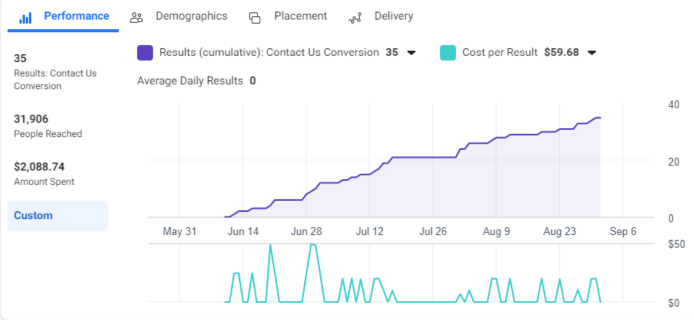
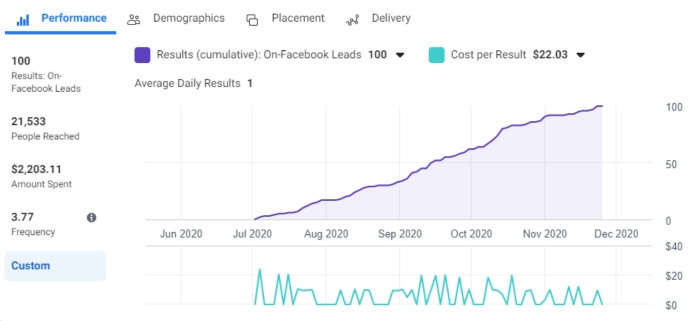
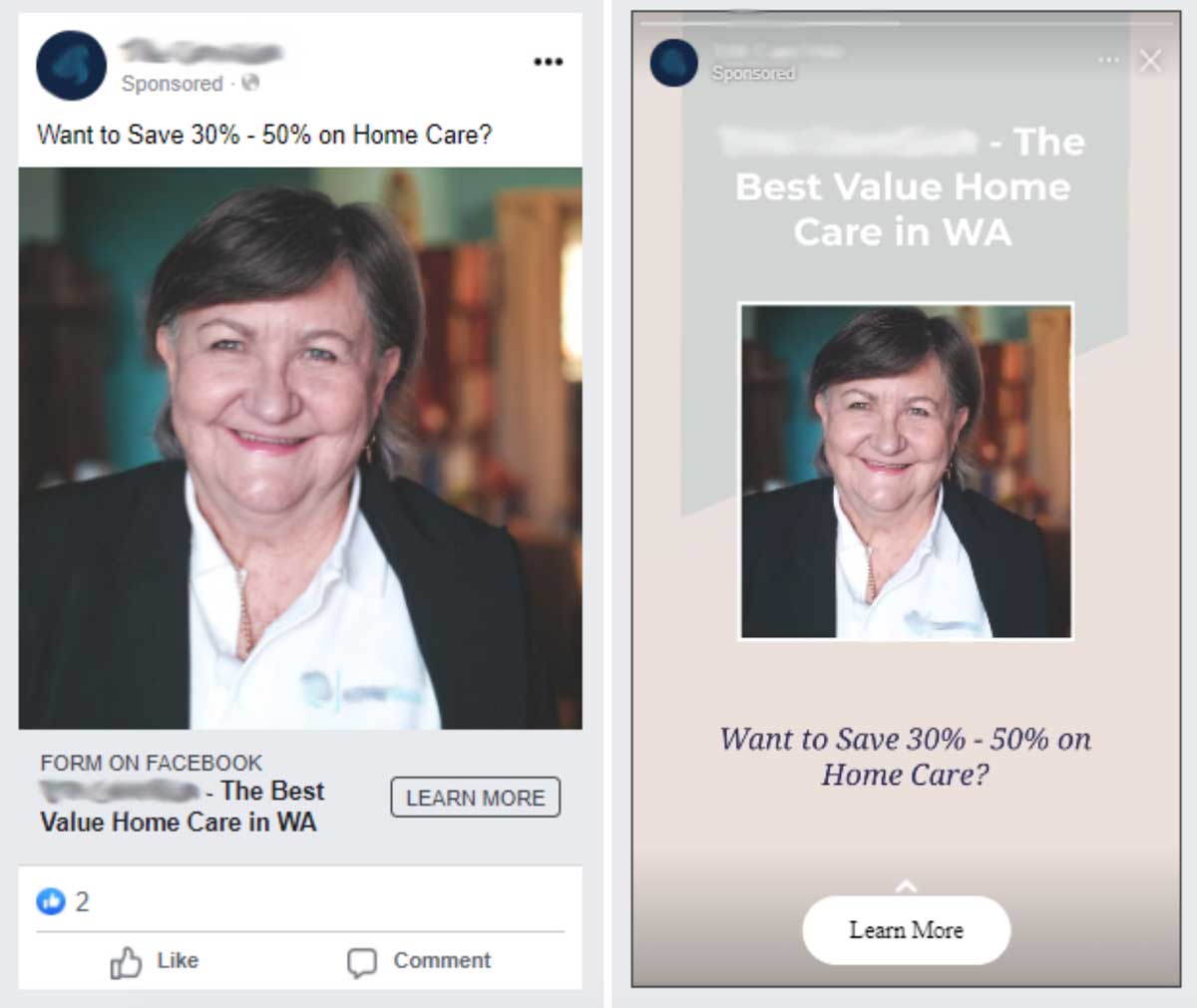
9. Data That Improves Your Entire Marketing Strategy
Revenue gains from your PPC campaigns are the goal – but your ROI shouldn’t stop there. The data in your Ads analytics will tell you more about your target audience and who is clicking through your ads to your site. In turn, you can better tune your other marketing efforts by writing content that speaks to them, and searching out more promotional activities (i.e. guest posts, collaborations) that target that same audience.
Here’s how we used Google’s Audience Insights tool with CanIRank client, Zello
If you have an existing campaign running through Google Ads, the Audience Insights tool will give you a broad overview of the different in-market and affinity audiences that correlate with the users that interact with your ads the most.
This screenshot shows the overlap of Zello users and different in-market audiences, plus an index for each selection that shows how well the correlation matches. We use these insights to help target new users in future campaigns, adjust our current bidding strategies to favor certain audiences, or break out new ad copy to specifically target affinity audiences that have a high overlap with our current customer base.
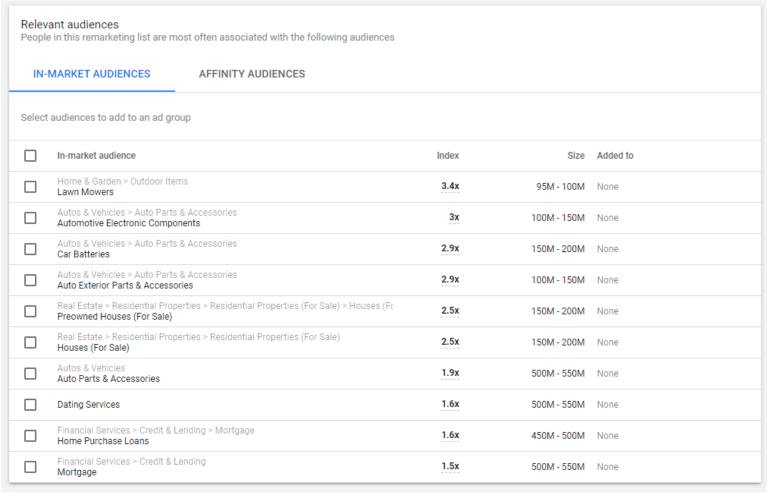
The Audience Insights tool also provides some basic demographic information for the users that click on your ads. This data, which includes things like age, gender, and parental status can be used to better understand who your main target really is.
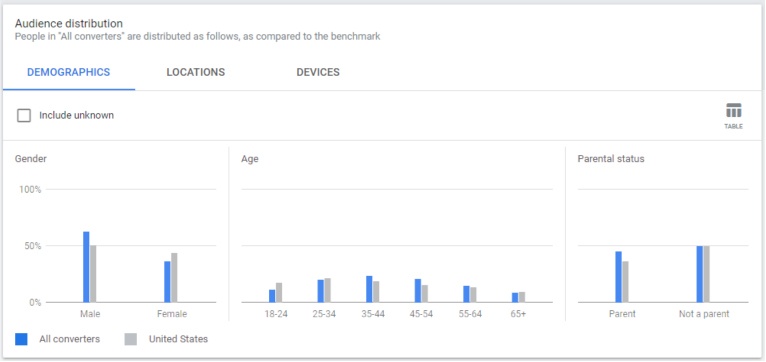
10. PPC + SEO
One of the biggest complaints about paid ad campaigns is that they’re, well, paid. As long as you keep paying to run them, and you’ve identified the right keywords and copy to attract qualified prospects, you can rely on them to deliver traffic. But if you need to cut your marketing budget or scale back your campaigns, that will have an immediate impact on the paid traffic you may have come to rely on for sales.
Organic traffic, on the other hand, is free – once you’ve got some relevant Page 1 positions. SEO is an investment, but it’s one that will deliver long-term gains. To use your PPC learnings in your SEO campaigns, create comprehensive, high-quality content that targets the ad keywords that are driving CTR. You’ll gain organic positions for those keywords, so you can reduce your paid spend, invest that budget into targeting new keywords, or on other marketing initiatives.
What to Look For in an Ads/Paid Ad Management Agency
Plain truth? There are a lot of Paid Management Agencies out there – and if you’re new to PPC, you might not know what to ask for or what to expect. By partnering with CanIRank, you get the benefits of smart, effective paid campaigns paired with expert content marketing and SEO. It’s a comprehensive digital marketing strategy, powered by the world’s most accurate SEO software.
Here’s why our clients choose CanIRank:
- Fair pricing that aligns with your incentives. Most agencies charge a percentage of ad spend, so they earn more when you pay more. Some agencies charge a flat fee, but what are they actually doing for it?
- Multichannel capabilities: ROI from Paid Search is much higher when you can also grow your organic traffic, improve the conversion rates of your landing pages, and nurture prospects through email and social media. You get better results when all of these elements are working together.
- Multiplatform expertise: Google Ads is great, but not the only game in town. Other platforms are better for some industries.
- Better understanding of your target audience and USPs. Knowing how to use the Ads platform is important, but the hard part of effective paid ad campaigns is the creative side: can you identify the right target audiences, learn how to reach them efficiently, and create compelling copy that resonates? This is what content marketers do every day, so that expertise can greatly improve your Paid Campaigns.
- Transparency: it’s important to know what work your agency is doing and why. CanIRank provides software-based results tracking, monthly check-in calls and a shared Asana board so you have visibility.
- Local market understanding: US-based consultants and no off-shoring
- Technology: proprietary software helps us identify which keywords are sending the most traffic to your competitors, and how to make your landing pages more relevant for higher Quality Scores.
- Flexibility: you don’t want to be locked into a contract, someone else’s tech platform, or a certain process. You should be able to go with what works. We’re month-to-month, enabling you to shift spend to other areas or bring in other marketing specialists as needed. Our campaigns adjust quickly by design.
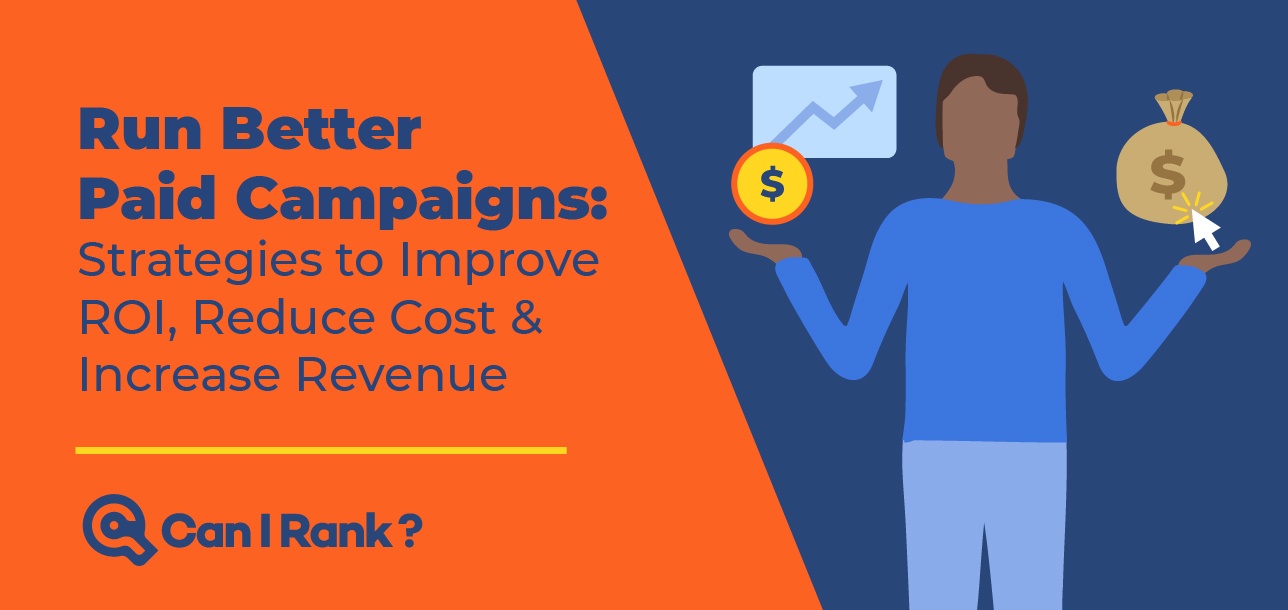


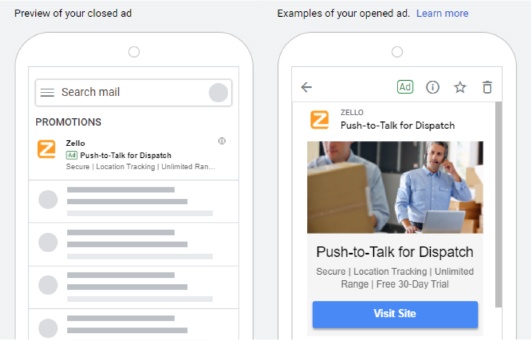
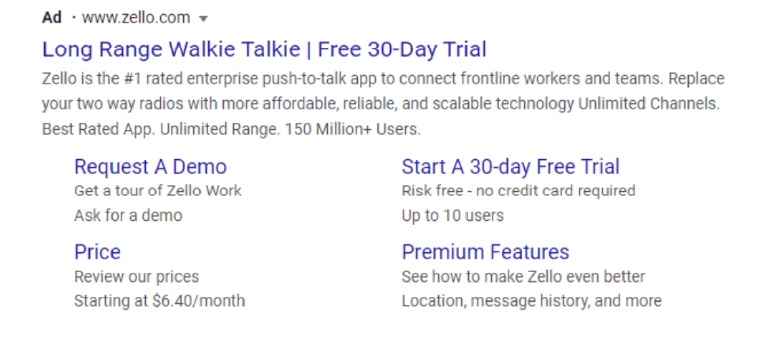
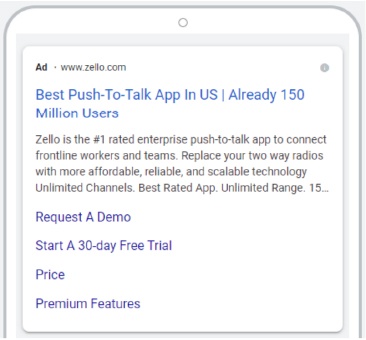



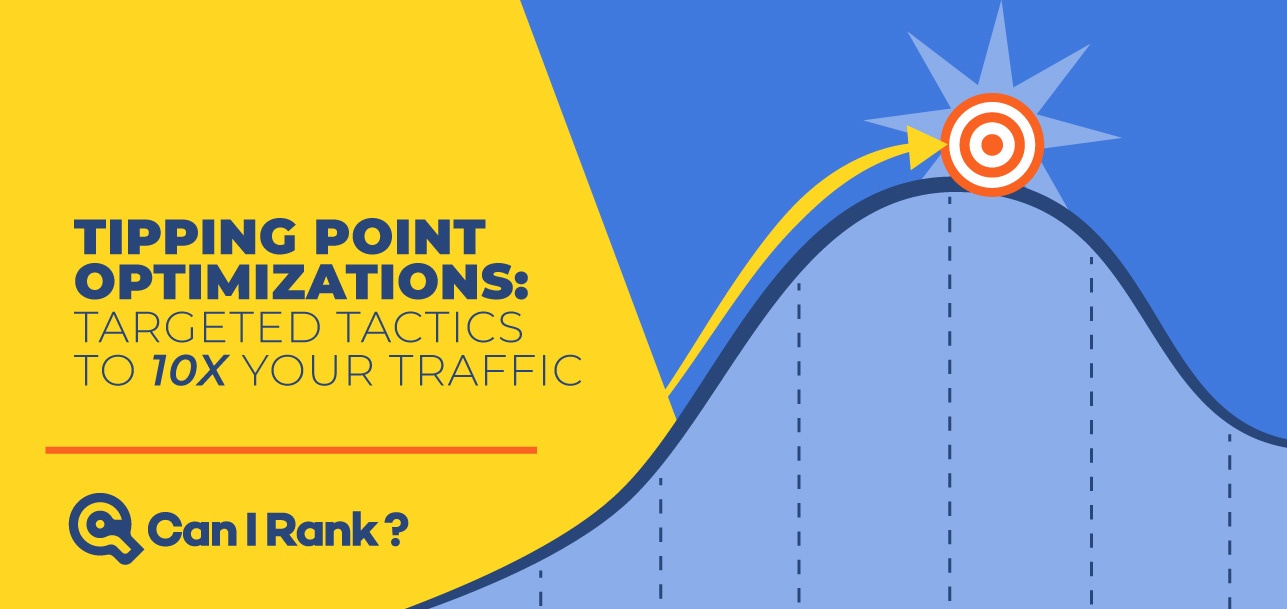
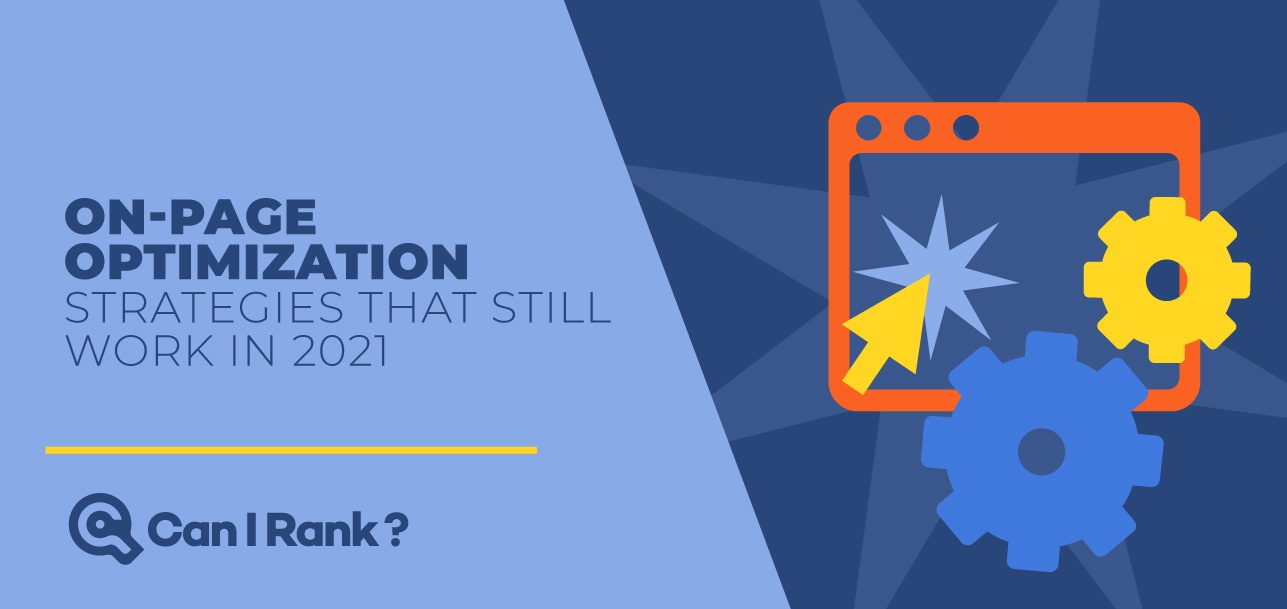

Leave A Comment